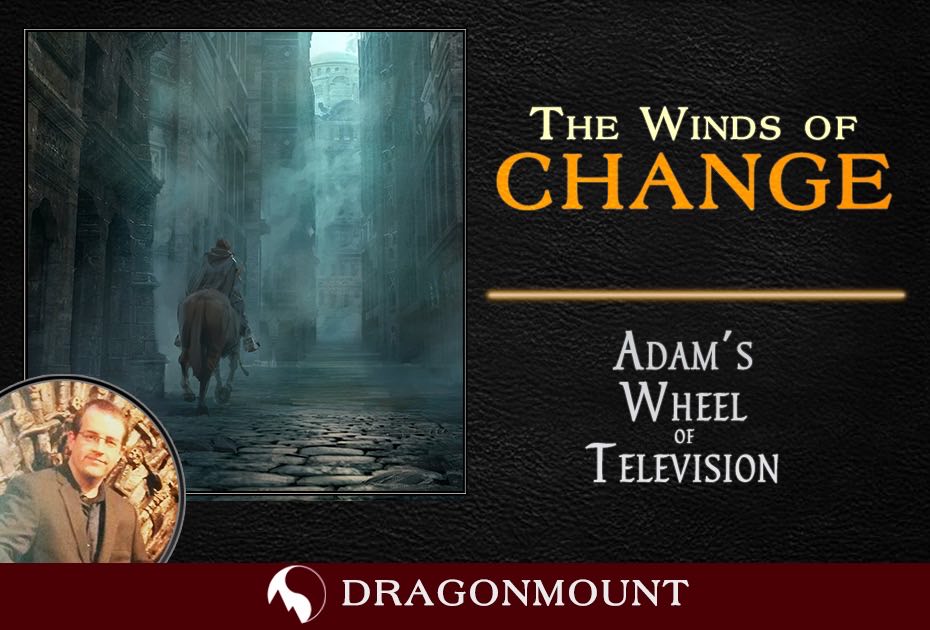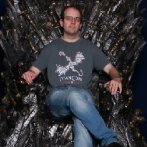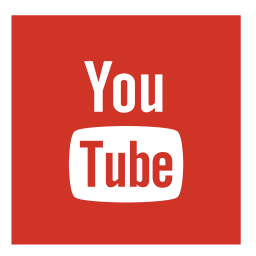
Adam Whitehead is Dragonmount's TV blogger. Adam has been writing about film and television, The Wheel of Time, and other genre fiction for over fifteen years, and was a finalist for the Hugo Award for Best Fan Writer in 2020. Be sure to check out his websites, The Wertzone and Atlas of Ice and Fire (including The Wheel of Time Atlas!) as well as his Patreon.
Welcome to 2021, the year that, all things being equal, we should see the Wheel of Time TV series finally hit our screens. It’s been a long road, both in terms of the thirty-one years the series has been in print and the sixteen months that have passed since shooting of the first season began on location in the Czech Republic and Slovenia.
As transmission draws nearer, Rafe Judkins and the Wheel of Time publicity team have started teasing images and videos from the series, such as the show’s version of a heron-marked blade and Thom Merrilin’s musical instruments.
These have been useful for showing the series’ production values and also hinting at creative decisions that are being taken which will mean things are different to the books.
Differences between books and their screen adaptations are of course nothing new, often driven by a combination of budgetary restraints, time pressure and maybe the TV scriptwriters spotting good story changes that the original novel writer may have done themselves if they’d had the luxury of writing the entire story before publishing it (as George R.R. Martin has recently said, “Five Kingdoms” sounds as good as seven, and would be a lot less work). In some cases, some of the biggest changes from book to screen have been carried out or approved by the original novel author themselves: J.K. Rowling signed off on all the Harry Potter movie scripts and Frank Herbert approved of the idea of the “weirding module” sound weapons for David Lynch’s version of Dune, when Lynch rejected the original novel’s hyper-fast kung fu as being too difficult to realise with 1984 technology.
Such changes can take place even in very faithful adaptations: Peter Jackson’s Lord of the Rings trilogy is, by normal movie standards, very close to Tolkien’s novel, but fans to this day debate the merits of changes such as removing Tom Bombadil and the Scouring of the Shire, having Legolas shield-surf into combat, over-using the Army of the Dead or having Aragorn randomly knocked off a cliff by a warg. Game of Thrones started off extremely faithfully to George R.R. Martin’s Song of Ice and Fire novels, but even in those early days fans still questioned the lack of violet eyes for the Targaryens, not showing a major battle sequence or casting a short actor as the supposedly-towering King Robert Baratheon.
The Wheel of Time finds itself in a difficult position in that it is entirely possible that the series will have less time than Game of Thrones to tell a story almost twice as long (so far). The Wheel of Time tops out at fourteen volumes (not counting the prequel) totalling almost four and a half million words, compared to A Song of Ice and Fire’s projected seven volumes and around two and a half million words. The Wheel of Time’s first two seasons are expected to come in at eight episodes apiece (as compared to Game of Thrones’ first six seasons of ten episodes apiece). With the show unlikely to last more than Game of Thrones’ eight seasons, that means Wheel of Time will almost certainly come in with a fair few less hours to tell a much longer story. And yes, The Wheel of Time has a lot of descriptive passages which can be skipped over with simple visuals, but that’s not going to be enough to make up such a huge difference.
That means changes, and compression and a substantial number of changes are coming to the story we all know and love. Some of these changes will likely be widely well-received – it’s a rare Wheel of Time fan who won’t admit to some subplot or tertiary character that doesn’t feel totally necessary to the story’s narrative, or eagerly asking for more scenes of Faile as a captive of the Shaido – and others will be more controversial.
In a recent Q&A, Rafe Judkins addressed the issue of changes. He notes there are no 100% original-to-the-show characters, but some book characters and character names may have been repurposed, and some characters combined so one character is now doing the role of three or four smaller roles. He also noted that in some cases, extras or background roles may not speak or be identified in dialogue, but will nevertheless be based on character descriptions from the novels.
Rafe also notes the perennial weakness of book-to-screen adaptations. In novels we can spend time inside characters’ heads and hear their thoughts and learn their motivations. On screen we can’t. The few times that shows or movies have tried doing this, it hasn’t really worked: the awkward voiceovers to describe character thoughts in David Lynch’s Dune comes to mind. As a result character motivations now have to emerge naturalistically through action and dialogue, and that can often be difficult and more time-achieving to show.
Changes in the show also have a vetting committee of sorts, starting with Rafe himself and creative consultant/superfan Sarah Nakamura and then going to Brandon Sanderson (who completed the Wheel of Time books after Robert Jordan’s sad passing), Harriet McDougal (Jordan’s widow and editor) and Maria Simons (one of Jordan and Sanderson’s assistants and researchers). This won’t stop major changes being made where necessary, but will ensure that each change has at least been stress-tested by a number of book experts to see if they are at least in the spirit of Robert Jordan’s writing.
There are several key changes likely for the first season. The first is that major characters who make their first appearance in The Eye of the World but then do not return for a long time, will not appear in the first season for simple practical reasons. The season already has an enormous cast with the characters who play a major role and adding in other characters who only appear for one scene and then don’t show up again for two or three seasons would risk being confusing as well as dangerous, since the actors might get other gigs in the meantime and not be available when they need to come back (this problem blighted Game of Thrones repeatedly, resulting in two actors playing Lord Beric and three playing the Mountain). Fans seem already resigned to key characters like Queen Morgase, Gawyn and Galad, and possibly Elayne, not appearing in Season 1 (although it is still possible some more roles will be announced), and other characters such as Elaida, Elyas and Mordeth have not been confirmed yet either.
Another problem that epic fantasy often has is the travelogue aspect. Fantasy novels often have characters travelling from place to place to have adventures, rather than staying put in one location. This is great for a novel but bad for television, which likes to have a relatively small number of regular standing sets the characters can be based around. Game of Thrones was lucky with the source material which often established bases of operations for characters, such as the Red Keep in King’s Landing, the northern court at Winterfell, the Night’s Watch stronghold of Castle Black and the various cities Daenerys conquers in the distant east. Wheel of Time does not do this for a long, long time. Eventually the story settles down and the royal palaces in Caemlyn and Cairhien, the White Tower in Tar Valon, the Stone of Tear and various inns in Ebou Dar become such bases, but not for a long time. Filming a travelogue is very expensive and challenging even for big-budget films.
The Eye of the World is a constantly-moving travelogue which moves from the Two Rivers to Taren Ferry, Baerlon, Shadar Logoth, Whitebridge, Caralain Grass, Arien, Four Kings, Breen’s Spring, Market Sheeran, Carysford, Caemlyn, Fal Dara, the ruins of the Seven Towers, the Eye of the World and Tarwin’s Gap. The TV show sounds like it will be adding scenes set in Tar Valon as well. Rafe has indicated that not all these locations will appear on screen, necessitating some changes to the story. The cost of building an elaborate, expensive outdoor set which is going to be used for a single ten-minute on-screen sequence may not be worth it when you can set those scenes elsewhere at a cheaper cost. Rafe’s answer to this does seem to add fuel to the widespread rumours that Baerlon will not appear in the first season, and that we will be meeting Min and the Whitecloaks (who have been cast) elsewhere, as an example of a practical change that may be unavoidable but will no doubt have some fans declaring the story to be “ruined forever” before seeing a single second of footage.
Other changes will come from casting. In Lord of the Rings, Frodo Baggins is 50 years old and a mature Hobbit by the time the adventure starts, but Elijah Wood was only 18 when he was cast in the role. Hardcore fans complained about the casting, but Wood’s performance was later widely praised and is now considered iconic by many people. In Game of Thrones, the writers and casting producers realised that casting thirty-somethings for the roles of fathers and family men didn’t look quite right by our modern sensibilities and thus aged up characters like Robert Baratheon, Catelyn Stark and Eddard Stark to their late forties or early fifties, and this was widely accepted.
For The Wheel of Time, the producers decided that Alexandre Willaume was the best actor they’d seen for the role of Thom Merrilin, even if he was around twenty years younger than Thom in the books. Casting an actual sixty or seventy-something for the role of Thom was unlikely to happen given the vigours of long-term, location filming. It also seems to have influenced the decision to change Thom’s instrument of choice. A harp is a large and unwieldy instrument to be lugging around a continent, and reducing the instrument to a half-sized harp or even a lyre may have felt a bit demeaning given Thom’s exacting standards. Switching to a guitar had several advantages, since it was more portable, better hinted at the setting’s more modern aesthetics (The Wheel of Time looks like a medieval fantasy, but more accurately is a 17th Century-style setting, lacking gunpowder) and it allowed Alexandre Willaume, who is a professional guitarist (even booking his guitar its own seat on the plane to the start of filming), to play the instrument live on set. These advantages were weighed as being more worthwhile than sticking to book accuracy.
There is of course a sliding slope when it comes to such decisions. Terry Pratchett fans are very unhappy with The Watch, a TV adaptation of the Discworld novels that has abandoned event the vaguest pretence of adapting the novels faithfully in favour of creating an original story with almost no influences, characters or settings from the book even present. Many adaptations have suffered death from a thousand cuts, where small changes for good-intentioned reasoning has led to massive shifts over time that made people wonder why the writers even bothered adapting the story in the first place. These are valid concerns but, so far, it appears that Rafe Judkins and his team have made changes and choices for the best. We can – hopefully – judge how successful they’ve been later this year.
As usual, let us know what you think and stay up to date with the latest news right here at Dragonmount.












Recommended Comments
Join the conversation
You can post now and register later. If you have an account, sign in now to post with your account.
Note: Your post will require moderator approval before it will be visible.